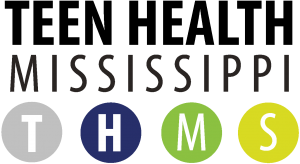Far too often, masculine expectations lead those who identify as male to engage in harmful behaviors, including high risk sexual behaviors. Educators, youth workers, and other caring adults frequently see the negative impact of these expectations and struggle to reach male identified folks who are unwilling to seek out and utilize health care services and other support networks. In this workshop, participants will explore and attempt to understand harmful masculine expectations and will leave with strategies for challenging and countering these expectations with the goal of promoting more positive, uplifting expressions of masculinity. Registration link here.
Training Hub
The Sex Education Collaborative Training Hub lists trainings for sex educators, facilitators, and other professionals on best practices for sharing important information with clients and the public. From teaching anatomy inclusively to effectively addressing bias in the classroom to addressing racial justice and equity in sex education, the Training Hub includes trainings, technical assistance, and policy support from state, regional, and national leaders in the field of sex education.
Please note: The Training Hub includes both in-person and online professional trainings. If you see a training you are interested in and it isn’t listed as virtual, please reach out directly to any of our members to find out what's possible!
Trainings Offered by State-Based and National Organizations
Displaying results 11 - 15 of 130Exploring the Impact of Masculinity on Sexual Health
- Indicator 4 (K-12): Describe three strategies to reduce the impact of conscious and unconscious bias and enhance cross-cultural interactions in the classroom when teaching sex education.
- Indicator 2 (K-12): Demonstrate three strategies for creating culturally responsive classrooms. (S)
- Indicator 4 (K-12): Demonstrate three strategies of a trauma-informed approach to sex education (e.g. giving trigger warnings before content on sexual assault and allowing students the right to pass as appropriate, etc.). (S)
- Indicator 1 (K-12): Demonstrate the ability to build rapport with students. (S)
- Indicator 2 (K-12): Demonstrate three student-centered instructional approaches that support a variety of learning styles. (S)
- Indicator 4 (6-12): Demonstrate how to use the experiential learning cycle when teaching. (S)
- Indicator 5 (K-12): Describe three effective strategies for practicing skills with students.
- Indicator 4 (6-12): Explain three facilitators and three barriers to STD/STI testing and treatment.
- Indicator 4 (K-12): Demonstrate the use of inclusive and affirming language. (S)
- Indicator 5 (K-12): Demonstrate the ability to intervene effectively in homophobic and other bullying comments and actions. (S)
- Indicator 6 (K-12): Explain three ways that LGBQ+ youth are at disproportionate risk for health disparities.
- Indicator 1 (K-12): Define racism (including individual, interpersonal, institutional, ideological, structural, and systemic), racial micro-aggressions, and reproductive justice.
- Indicator 2 (K-12): Name three sexual health inequities and some of their systemic causes (e.g., African American women living with HIV have expressed mistrust toward healthcare professionals, in part, as a result of systemic racism).
- Indicator 3 (K-12): Describe three ways power, privilege, prejudice, discrimination, and stereotypes related to age, race, ethnicity, sexual orientation, gender, gender identity, socio-economic status, immigration status, and/or physical or intellectual ability can impact sexual health and reproductive justice.
- Indicator 5 (K-12): Describe three strategies educators can use to acknowledge and proactively work to mitigate the impact of bias on their students’ sexual health and multiple, intersecting identities.
- Indicator 2 (K-12): Demonstrate the ability to effectively respond to three different types of challenging questions. (S)
- Indicator 1 (K-12): Describe three health (e.g. physical, social and/or emotional) and/or academic benefits of sex education for young people
GSA Advisor Workshop
Many supportive educators and school staff are asked to be Gay Straight Alliance (GSA) advisors, but don’t know where to start. GSAs (also known as gender and sexuality alliances, queer straight alliances, and other names) are student-driven clubs for LGBTQ+ students and allies. They play a huge role in making schools more safe and supportive. This workshop, for both prospective and current advisors, covers the landscape of LGBTQIA+ youth’s experiences in and out of schools, how advisors can be allies and advocates in a youth-driven group, and practical skills to help start, facilitate, and sustain a GSA.
In this training, participants will:
- Self-reflect on their own identities, experiences, and biases.
- Discuss what it means to be an adult ally to a youth-driven group.
- Gain a better understanding of the complexities of gender and sexuality.
- Review relevant and current data on LGBTQIA+ youth.
- Understand what GSAs do, why they're important, and how they work.
- Gain knowledge and skills in starting, running, and sustaining a GSA.
- Gain an understanding of how systems of oppression affect youth at every socio-ecological level both inside and outside of school.
- Indicator 1 (K-12): Define conscious and unconscious bias and explain how they could influence one’s teaching of sex education.
- Indicator 3 (K-12): Explain how an educator’s personal beliefs about racial and reproductive justice could influence their teaching of sex education.
- Indicator 4 (K-12): Describe three strategies to reduce the impact of conscious and unconscious bias and enhance cross-cultural interactions in the classroom when teaching sex education.
- Indicator 1 (K-12): Demonstrate three techniques to create an inclusive and affirming learning environment. (S)
- Indicator 2 (K-12): Demonstrate three strategies for creating culturally responsive classrooms. (S)
- Indicator 1 (K-12): Explain how availability of supportive school staff, presence of Gay-Straight Alliances (GSAs), LGBQ-inclusive curricular resources, and the presence of comprehensive, enumerated anti-harassment school policies are related to improved school climate for students of all sexual orientations.
- Indicator 2 (K-12): Define sexual orientation and sexual identity, including that everyone has both.
- Indicator 3 (6-12): Explain the difference between sexual orientation, sexual behavior, and sexual identity.
- Indicator 4 (K-12): Demonstrate the use of inclusive and affirming language. (S)
- Indicator 6 (K-12): Explain three ways that LGBQ+ youth are at disproportionate risk for health disparities.
- Indicator 7 (K-12): Identify three credible, medically accurate, youth-friendly resources that can provide information or support related to sexual orientation.
- Indicator 8 (K-12): Explain why it is essential to include positive portrayals of LGBQ+ people in lessons.
- Indicator 9 (K-12): Demonstrate three strategies that can be used to include positive portrayals of LGBQ+ people in lessons. (S)
- Indicator 1 (K-12): Explain how availability of supportive school staff, presence of Gay-Straight Alliances (GSAs), gender-inclusive curricular resources, and the presence of comprehensive enumerated anti-harassment school policies are related to improved school climate for students of all gender identities.
- Indicator 2 (K-12): Demonstrate the use of inclusive and affirming language. (S)
- Indicator 3 (K-12): Define gender identity and sex assigned at birth.
- Indicator 4 (K-12): Explain how gender identity and gender expression are distinct from each other and from sexual orientation.
- Indicator 6 (K-12): Explain three ways that transgender and gender expansive youth are at disproportionate risk for health disparities.
- Indicator 7 (K-12): Identify three credible, medically accurate, youth-friendly resources that can provide information or support related to transgender and gender expansive people.
- Indicator 8 (K-12): Explain why it is essential to include positive portrayals of transgender and gender expansive people in lessons.
- Indicator 9 (K-12): Demonstrate three strategies that can be used to make lessons affirming for transgender and gender expansive people. (S)
- Indicator 1 (K-12): Explain the differences between personal and universal values relating to sexuality.
- Indicator 2 (K-12): Describe how verbal and nonverbal expression of personal values, and comfort with topics related to sex education, could impact one’s teaching
Barriers to Abortion Access for Michigan Minors
Unplanned pregnancies are challenging for any population, but particularly for adolescents. When dealing with issues like pregnancy and abortion, teens are often denied the tools to make informed and autonomous decisions. This training will work with participants to identify and set aside individual judgments in order to provide unbiased support to pregnant adolescents. The training will also cover mandatory parental involvement laws, judicial bypass, and how to help minors navigate the judicial bypass system.
In this training, participants will:
- Identify own biases around abortion and teen pregnancy.
- Gain an understanding of unique barriers teens face to access abortion services.
- Define and review parental involvement laws and judicial bypass.
- Define requirements for judicial bypass.
- Describe the judicial bypass process.
- Discuss findings from MOASH's Michigan Youth (MY) Rights project.
- Indicator 1 (K-12): Describe three health (e.g. physical, social and/or emotional) and/or academic benefits of sex education for young people
- Indicator 2 (K-12): Describe state and/or district laws, policies, and standards that relate to sex education where one teaches.
- Indicator 1 (K-12): Explain the differences between personal and universal values relating to sexuality.
Cyberbullying: Recognizing Signs & Intervening
Participants will gain knowledge and develop skills required to recognize signs that a child may be a victim of cyberbullying and/or abusing someone through cyberbullying. Participants will practice using empowerment as an intervention to cyberbullying.
This training is designed for:
- Educators
- Teachers
- Substitute Teachers
- Counselors
- Coaches
- Parents
- Clergy
- Community Workers
- Healthcare Providers
- Healthcare Staff
- Clinicians
- Indicator 4 (K-12): Describe three strategies for incorporating the positive and negative impacts of communicating through technology into lessons on healthy relationships.
- Indicator 5 (K-12): Describe three ways to help students set and respect personal boundaries in relationships.
Connections Matter
Connections Matter is a training designed to engage community members in building caring connections to:
- Improve resiliency,
- Prevent childhood trauma, and
- Understand how our interactions with others can support those who have experienced trauma.
- Indicator 1 (K-12): Demonstrate three techniques to create an inclusive and affirming learning environment. (S)
- Indicator 3 (K-12): Describe three elements of a trauma-informed approach to sex education.
- Indicator 4 (K-12): Demonstrate three strategies of a trauma-informed approach to sex education (e.g. giving trigger warnings before content on sexual assault and allowing students the right to pass as appropriate, etc.). (S)
- Indicator 1 (K-12): Demonstrate the ability to build rapport with students. (S)
- Indicator 6 (K-12): Describe three strategies for actively involving parents, caregivers, and other trusted adults in a sex education program.
Additional Trainings offered by out-of-state organizations
- ‹ previous
- 3 of 42
- next ›
CSE 101
What is comprehensive sex education (CSE)? Join us to learn the components of CSE, why it’s important, and how it can benefit your students and your school. We will also discuss the process for getting approval from your school board and how GCAPP staff can support you.
- Indicator 1 (K-12): Describe three health (e.g. physical, social and/or emotional) and/or academic benefits of sex education for young people
- Indicator 2 (K-12): Describe state and/or district laws, policies, and standards that relate to sex education where one teaches.



